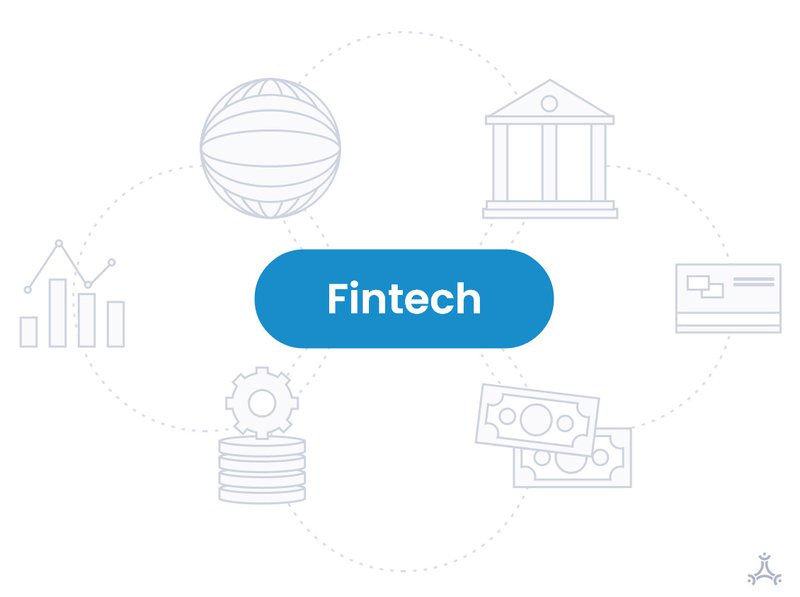Why most banks and financial institutions use Java
Published

FinTech software, e.g. B. for banking applications and financial institutions, is now more important than ever. We live in a world where we rely heavily on programs to make our lives easier on a regular basis. In the past, all these banking processes were carried out manually, which made them prone to human errors.
But today a large part of these processes is automated. Banks offer the safest transactions and typically have a user-friendly interface that can be easily used and understood by all audiences.
If you want to refresh your Java knowledge or even further expand it, we recommend you Skillshare as a learning platform.
Banks and Java
In the days when banking software was gaining prominence Java the programming language of choice for several reasons. The two main reasons were:
- Banks love security
- Banks love portability
Java as a programming language offered exactly that: excellent security and portability features. Let's take a closer look.
Security

Those : fintechna.com
The Java components are designed to restrict data access and provide a range of memory security features that help reduce vulnerabilities caused by common programming errors. Java banking applications are reliable and that is the first and most important reason why banks choose Java. For a more detailed overview of Java's security features, see this documentation. At this point we have to mention that Java, like all other programming languages, is not perfect. A critical vulnerability has been found in the Java logging library “Log4j”. You can find out more about this in this article.
portability
Memory leaks are reduced and controlled by automatic garbage collection. The Java Virtual Machine (JVM) makes the language something special because you can run Java bytecode on any computer that is independent of the operating system.
High performance
The JVM's performance wasn't that brilliant initially. For this reason it was considered a slow language. Eventually it was perfected and is now very powerful. In fact, banking projects in Java demonstrated excellent results.
Organized documentation

Those : efinancialcareers.com
The official Java documentation is extensive and well structured. Javadoc is a tool included with the Java Development Kit (JDK) that generates HTML formatted Java code documentation from Java source code. You can start developing immediately as the language is available as open source.
Business support and regular updates
Oracle updates Java every six months by modifying the language and bringing it up to date with the latest technology. This ensures that the language is always up to date with new security issues and hacker attacks. In fact, all customers can take advantage of the company's support.
Easy application updates and lower costs
To reduce hardware costs, the banking industry is increasingly relying on cloud-based technologies. Java is a server-side programming language that makes the transition to cloud computing easier. Java developers only need to focus on deploying the code and ensuring that it passes the appropriate unit tests in the development phase.
Great community
Java has a large developer community. If you get stuck on something, you can always get help from the Java developers and community. Since Java is an open source language, many developers participate in creating and developing libraries and features to improve the language.
FinTech-friendly libraries and powerful open source data management tools
Java can make operating, maintaining, and expanding software-as-a-service applications easier and more cost-effective.
Most FinTech products require powerful data management tools that Java mastered excellently. Java is the way to go if you want to build a data-intensive financial project that leverages artificial intelligence or machine learning (although summarizing an online banking system in Java obviously involves data collection and analysis).
Every update to the language is packed with FinTech-friendly libraries. There are tons of such libraries used in financial institutions, in addition to robust database libraries. Banking software is already in production and used by millions of users. The FinTech space uses a lot of big data software that is written in Java and is available as open source software, making it freely accessible to developers.
Distributed computing and multithreading language

Those : rikkeisoft.com
A distributed environment is required for all modern financial programs. Therefore, programmers must look for techniques that facilitate decentralized computing.
Java has built-in Networking capabilities , which facilitate distributed computing.
Java also supports many threads. It is quite easy to integrate these into processes, systems and applications. To support multithreading, Java does not rely on operating system-specific processes. Therefore, banking applications can be seamlessly integrated with third-party services, systems and applications.
Spring Boot 2 + OpenAPI (microservice architecture)
The Spring Boot Framework (using Java) used in the microservice architecture and the OpenAPI specification are one of the best ways to build a banking service. In fact, most modern banking services take this approach, and things are going quite well for them.
The OpenAPI, formerly Swagger, is a specification for machine-readable interface specifications that describe, produce, consume, and visualize RESTful web services.
The real power of this specification is the ability to focus on a specific banking process that is transformed into a service, more specifically a microservice. It focuses solely on this one action and captures it well while communicating with other services used by the bank.
It is very easy to release a new version of the service and, if necessary, create a hotfix for the already released version. Deployment can be very well organized with software such as Kubernetes (open source container orchestration system for automating the deployment, scaling and management of computer applications).
In most cases, banks want to purchase software from a proven banking software platform provider. Sometimes they prefer to acquire a specific part of the entire core banking platform.
For example, some banks only want to purchase the transaction portion of the software. For this reason, providers divide the entire banking software into many functions. Each function has its own responsibility; For example, some of these features include payments, checks, access control, transactions, notifications, etc.
So if a bank needs software that has a proven track record and is continually maintained by the provider, it purchases it and has its IT team integrate it into the bank's existing software. This is how software upgrades and new features are handled.
Creating such functions with Java is clean, safe and easy. The work is always divided between the teams. Each skill belongs to a specific team, and they integrate the entire banking structure together.
Conclusion
Banks and financial institutions cannot afford to make mistakes.
The penalty for poor work on their software is high, and the reward for good work is almost non-existent.
In other words, in this environment there is not much incentive to take risks in software development. That's why institutions like this are so conservative, sticking to what works instead of experimenting with new languages.
Java offers great support for businesses and has a large community. It also has high-quality open-source FinTech libraries and strong security features.
For FinTech companies, one of the most desired Java features is portability. It is called portable because the Java compiler outputs bytecode.
Java has networking capabilities that facilitate the use of distributed computing, which is a must for banks and financial institutions. It should also not be forgotten that integrating Java banking applications with third-party services, systems and applications is almost effortless.
This practice for Java-based banking software is very well accepted in the banking industry. This will continue to be the case in the future, considering that the language meets the needs of the FinTech industry.
Although Node.js is also a choice for banking projects, Java is still the preferred option.








